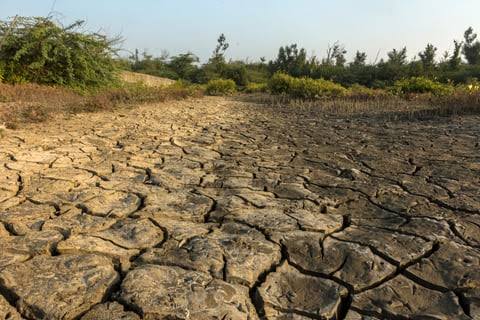A staggering 77.6% of Earth’s land has experienced drier conditions over the last three decades, with significant implications for agriculture, ecosystems, and human livelihoods, a new United Nations report reveals.
The report, The Global Threat of Drying Lands: Regional and Global Aridity Trends and Future Projections, launched at the ongoing 16th Conference of Parties (COP16) to the UN Convention to Combat Desertification (UNCCD) in Riyadh, Saudi Arabia, highlights an alarming trend of permanent land drying fueled by human-induced climate change.
Drylands expanded by approximately 4.3 million square kilometers between 1990 and 2020 an area nearly a third larger than India. These drylands now cover 40.6% of the Earth’s land area, excluding Antarctica.
The report further indicates that 7.6% of global lands have crossed critical aridity thresholds, transforming from humid landscapes to drylands.
This shift has dire consequences for food security, biodiversity, and livelihoods, particularly in regions already grappling with water scarcity and desertification.
Africa Among Worst Hit
Africa is one of the hardest-hit continents, with the report noting a 12% decline in gross domestic product (GDP) between 1990 and 2015 due to rising aridity.
Central Africa’s biologically diverse regions are experiencing significant degradation, threatening numerous species and ecosystems.
Countries like South Sudan and Tanzania have seen the largest percentage of land transition to drylands, while aridification has exacerbated poverty, water scarcity, and food insecurity across the continent.
Aridity Versus Drought
UNCCD Executive Secretary Ibrahim Thiaw clarified the distinction between aridity and drought, emphasizing that while droughts are temporary, aridity signifies a permanent transformation. “Droughts end. When an area’s climate becomes drier, the ability to return to previous conditions is lost,” he stated.
He warned that the drier climates now affecting vast swathes of land globally will not revert to their former states, redefining life on Earth and threatening billions of people.
Forced Migration and Ecosystem Collapse
Rising aridity is already driving migration, with millions of people forced to abandon their homes due to collapsing agricultural systems and water scarcity.
The report projects that up to five billion people over half the global population could live in drylands by the end of the century under high greenhouse gas emissions scenarios.
Aridification also poses a significant risk to biodiversity, with one-fifth of the Earth’s land expected to experience abrupt ecosystem transformations by 2100, leading to habitat loss and species extinction.
Global Hotspots
Regions identified as aridity hotspots include southern Africa, the Mediterranean, and parts of Asia, Europe, and the Americas.
Countries such as China have seen the largest total area shift from non-drylands to drylands, while the Middle East and southern Europe face increasing sandstorms and wildfires linked to aridity.
Recommendations for Action
The report calls for urgent action to mitigate the impacts of rising aridity and offers a roadmap for global resilience.
It calls for the Integration of aridity metrics into drought monitoring systems to enable early detection and intervention.
Promoting sustainable land management practices to restore ecosystems and enhance resilience, and adopting technologies like rainwater harvesting and wastewater recycling to manage water resources.
It calls for the empowerment of local communities through education, capacity building, and financial support.
It also call for the the aligning national policies with international frameworks such as the UNCCD’s Land Degradation Neutrality goals.
Urgency of Action
Nichole Barger, Chair of the UNCCD Science-Policy Interface, stressed the need for immediate and concerted global efforts.
“Without concerted efforts, billions face a future marked by hunger, displacement, and economic decline. The question is not whether we have the tools to respond it is whether we have the will to act,” she said.
African nations, in particular, must prioritize sustainable development and climate adaptation to address the looming challenges posed by aridification.
Experts warn that failure to act will result in escalating humanitarian and environmental crises.
The ongoing UNCCD COP16, holding in the Middle East for the first time, underscores the urgency of tackling aridity and its cascading impacts on a global scale.
For Africa, the stakes could not be higher.
By Dare Akogun








